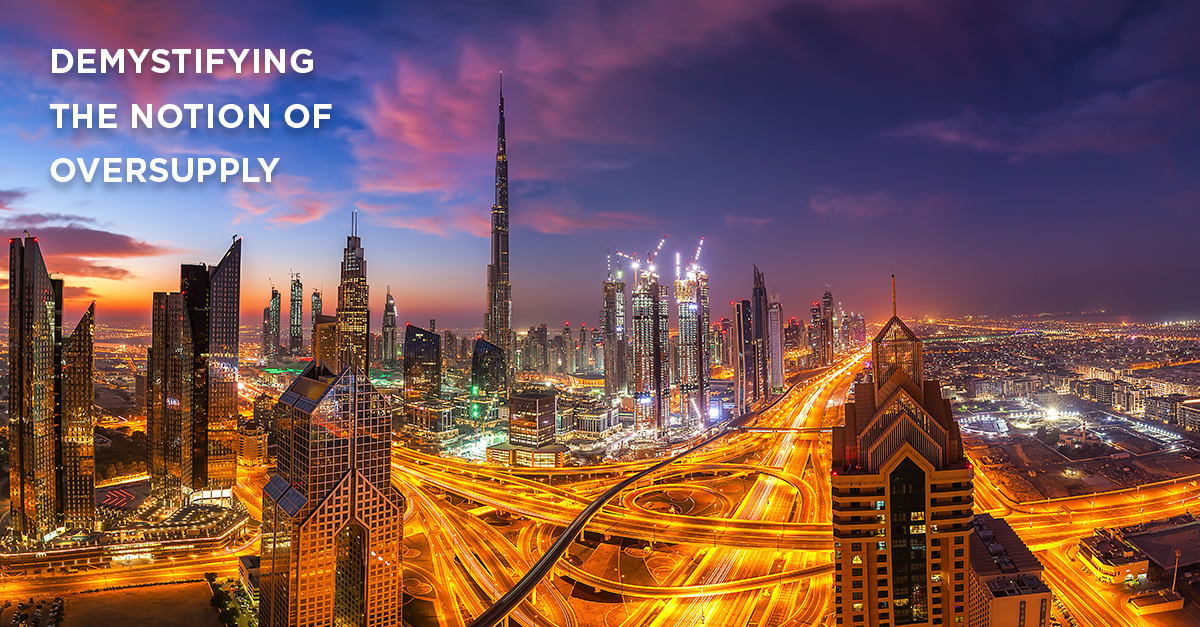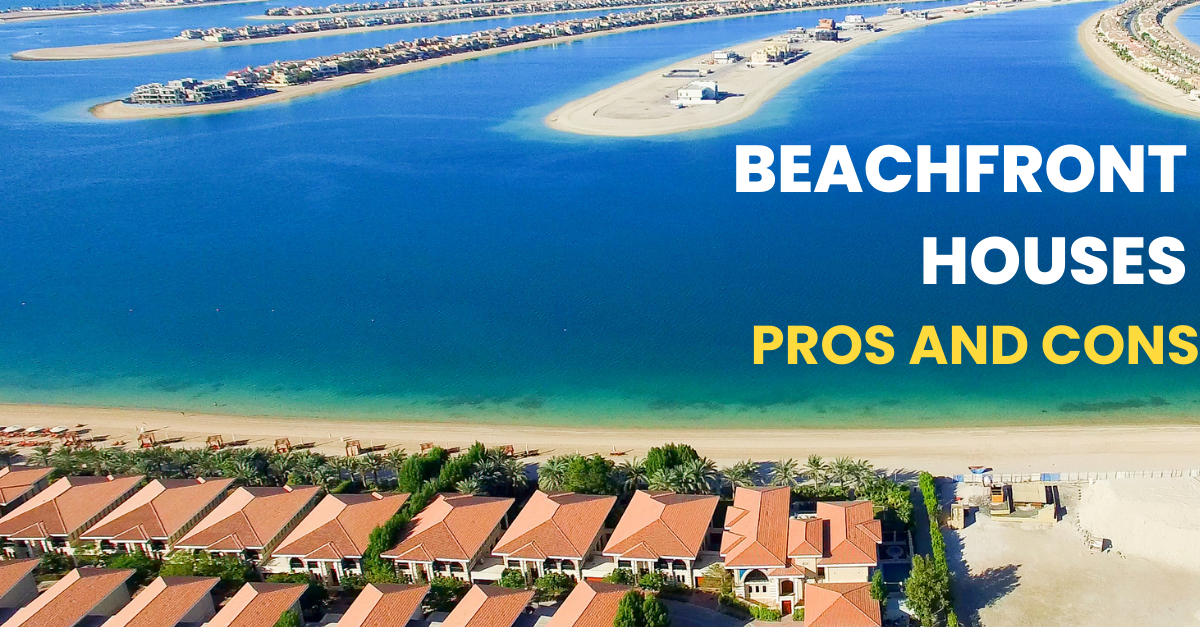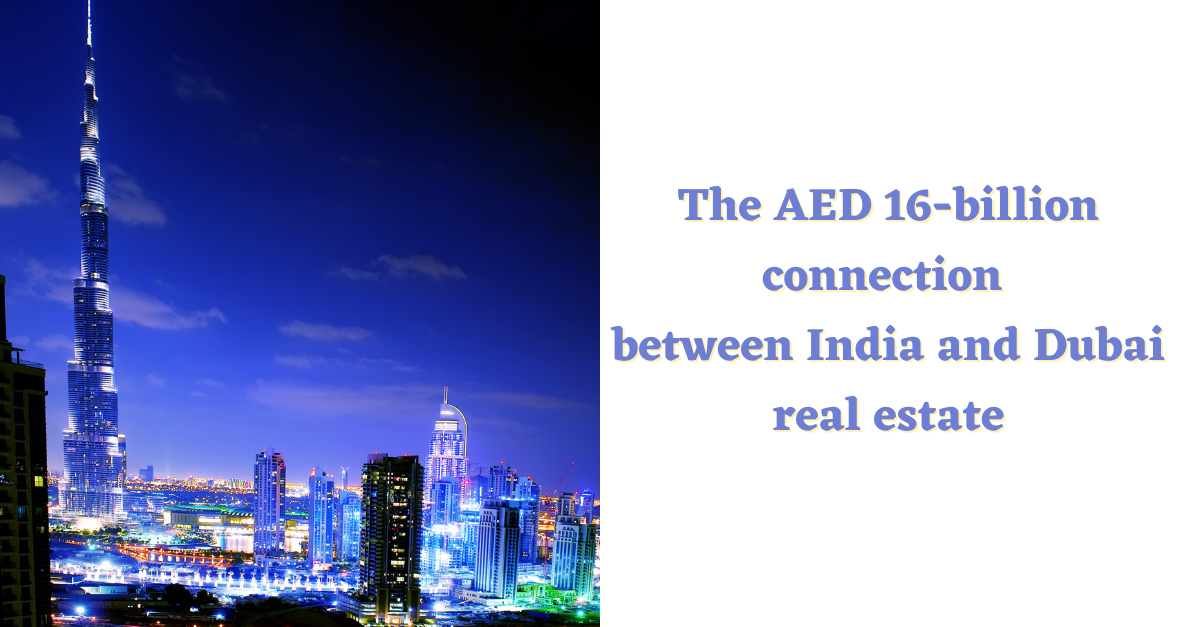Demystifying the notion of oversupply
Ever since 2014, the word ‘oversupply’ has been used by a section of real estate analysts and researchers, in the context of the Dubai market. The primary determining factors behind the notion that makes this term a recurring one is the number of under-construction buildings and the projected handover time, contextualized in terms of sales volume, demand statistics and inventory. From a mathematical standpoint, it’s possible that the current state of these figures in the Dubai market could be termed an oversupply. However, as far as market implications are concerned, there are several subtle details that need to be taken into account as well.
Owing to multiple regulatory reforms and reorganization in 2019, and with Expo 2020 round the corner, the credibility of using projections from the past, to paint an honest picture of Dubai’s property market, is questionable. Under the leadership of Sheikh Mohammed, several far-reaching initiatives have come into effect, as the excitement builds up for the Expo. The regional real estate market accounted for at least 25% of overall GDP growth in 2018, and if projections surrounding the upcoming mega-event and recent transactional data are anything to go by, the Dubai real estate is poised to witness even more dynamism in 2020. Contrary to what some analysts are suggesting, the demand versus supply equation in Dubai real estate goes beyond the linear narrative of an ‘oversupply’.
Promising projections
According to leading property portal, Property Finder, residential sales witnessed a year-over-year growth of 33.46% in Q2, FY2019-20, marked by 8,833 deals compared to 6,618 in the corresponding period last year (1). However, sales in Q2 were soon matched by combined sales in the months of September and October alone, clocking 8,781 transactions. At the same time, an estimated 4,133 residential units, across 18 projects, are expected to have a completion status of between 65 to 99% by September 2020, a month before Expo2020 kicks off. Although this means additional stock, completion will not necessarily translate to ready-to-move-in status.
The increased sales volume in the recent months are promising, besides being an indication of times to come. In addition one also needs to take into account the rise of the short term rental market. Dubai hosted 15.8 million visitors last year, placing the city in the list of top five most visited destinations in the world. Over the course of the Expo, around 25 million attendees are expected to provide additional impetus to the growing tourism industry, which constitutes a staggering escalation in demand. This inter-sectoral impact between real estate and tourism in Dubai has been significant in the modern era and such a huge number of additional visitors renders any comparison to previous years moot. With a population growth rate of 10.7%, and millennials increasingly entering the real estate market, sustained demand is a strong possibility, going forward.
Government at the helm
Dubai’s leadership has responded to the ‘oversupply’ concerns of analysts and research bodies, through important and timely initiatives. A real estate planning committee has come into existence recently, with a clear objective to strike a balance between supply and demand, by streamlining developments. Sheikh Mohammed has directed the high-level committee to work towards avoiding general glut, promoting diversification in property developments and bringing real estate sector in line with national economic goals.
Relaxation in ownership regulations and introduction of long-term visa plans are, among other things, aimed at stimulating demand in real estate. The government is dedicated to attract a global talent pool and high net worth individuals, by offering a stable, secure and growth-oriented environment in Dubai. The push for diversification in developments stems from the need to fuel the homebuying aspirations of middle-income professionals, who constitute a sizable demographic in Dubai. Responsibilities and operational purview of Real Estate Regulatory Agency (RERA) and Dubai Land Department (DLD) have been redefined and redistributed, so as to allay ambiguities and increase operational efficiency.
Incentives by developers to tackle oversupply
Post-handover payment plans for off-plan properties have been popular among developers, and are now available for ready-to-move-in properties as well. These plans often span anywhere from three years to 20 years. Developers have gone as far as partnering with different financial institutions for down payment and mortgage, to entice buyers with attractive payment plans. Even rent-to-own and guaranteed-rental-return schemes are becoming mainstream. Several instances of waiving registration fee, which accounts for 4% of the purchase price, have been recorded over the past year. To put that into perspective, 4% waiver on an AED1.5 million property saves the buyer a whopping AED 60,000. Sellers in the secondary market are unlikely to part with a profit offset such as that.
Now, as sellers in the secondary market cannot measure up to the incentives from developers in the primary market, buyers are expected to favour the latter, which, in turn, translates to inventory reduction on a broader scale. As per the latest data, Dubai’s residential stock is pegged at 542,000 as the year draws to a close (2). However, with the new committee streamlining the supply chain, and the approaching Expo2020 event, the gap between demand and supply will soon diminish. In the meantime, it is advisable to trust the process and stay optimistic.




